Picea abies, Norway spruce
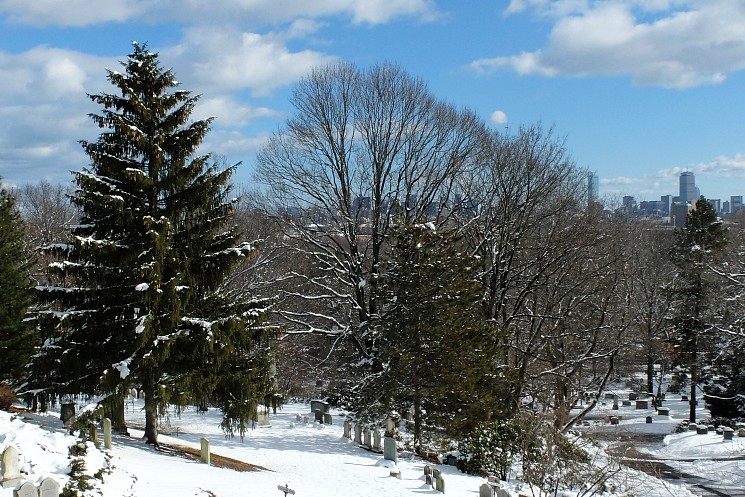
Softly pummeled overnight, the lower
limbs of our Norway spruce
flexed and the deepening snow held them….
-Thomas Reiter
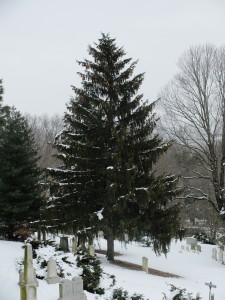 Mount Auburn’s winters often are long, but our landscape is beautifully accentuated with many evergreen trees and shrubs. One important tree is the Norway spruce, Picea abies, abundantly represented here. This well-known tree is native to eastern and central Europe, and long there has been an important forest and timber tree, as well as providing widespread horticultural use. This is a tree that often grows 60 to 100-feet tall. One, in a national park in Bosnia-Herzegovina, has been measured at 207-feet tall.
Mount Auburn’s winters often are long, but our landscape is beautifully accentuated with many evergreen trees and shrubs. One important tree is the Norway spruce, Picea abies, abundantly represented here. This well-known tree is native to eastern and central Europe, and long there has been an important forest and timber tree, as well as providing widespread horticultural use. This is a tree that often grows 60 to 100-feet tall. One, in a national park in Bosnia-Herzegovina, has been measured at 207-feet tall.
It’s evergreen, shiny, needles are ½-to-1-inch-long, occurring singly, and spirally around the twig in all directions, unlike firs (Abies), whose needles more often occur horizontally or V-shaped along the stems.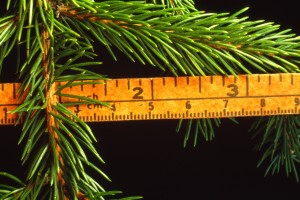 These stiff, straight or curved, leaves are quadrangular in cross section. If you remove one needle and attempt to roll it between your thumb and index finger, you will feel its diamond shape. Try to remember, spruce have shape, firs are flat. Another helpful phrase is, spruces are sharp, and firs are friendly. This alludes to the blunt, point at the end of spruce needles, contrasted with no points on fir needles. Spruce needles have another unique characteristic, its needles are each attached to the twig via a small woody projection, the sterigma. When you pull off one needle, a bit of the woody sterigma breaks off with the needle. When the needles fall off naturally themselves, after seven to ten years, these remaining sterigma leave a distinctive bumpiness to the stem.
These stiff, straight or curved, leaves are quadrangular in cross section. If you remove one needle and attempt to roll it between your thumb and index finger, you will feel its diamond shape. Try to remember, spruce have shape, firs are flat. Another helpful phrase is, spruces are sharp, and firs are friendly. This alludes to the blunt, point at the end of spruce needles, contrasted with no points on fir needles. Spruce needles have another unique characteristic, its needles are each attached to the twig via a small woody projection, the sterigma. When you pull off one needle, a bit of the woody sterigma breaks off with the needle. When the needles fall off naturally themselves, after seven to ten years, these remaining sterigma leave a distinctive bumpiness to the stem.
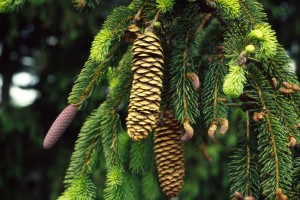 As with most other conifers, Norway spruce will produce separate male and female flowers in late spring. The pollen producing, catkin-shaped, male flowers are inconspicuous. It is the female flowers, also inconspicuous, which if successfully fertilized, will develop into distinctive cones. In maturity these Norway spruce cones are an elongated, four-to seven-inches long. The cones hang pendulously, unlike the fir cones (which sit upright on branches), and may persist on the trees for one or more years. In immaturity Norway spruce cones may have an attractive purplish color. Many species of birds and mammals will feed on the tiny seeds produced within these cones.
As with most other conifers, Norway spruce will produce separate male and female flowers in late spring. The pollen producing, catkin-shaped, male flowers are inconspicuous. It is the female flowers, also inconspicuous, which if successfully fertilized, will develop into distinctive cones. In maturity these Norway spruce cones are an elongated, four-to seven-inches long. The cones hang pendulously, unlike the fir cones (which sit upright on branches), and may persist on the trees for one or more years. In immaturity Norway spruce cones may have an attractive purplish color. Many species of birds and mammals will feed on the tiny seeds produced within these cones.

…A blackbird leaves her pine trees
And lands in my spruce trees….
-Eavan Boland
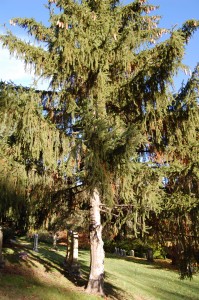
…pale robins bouncing their good postures
in the spruce shadows.…
-John Poch
Richard Warren (1907-1999), physician and plantsman, writing of Norway spruce in a 1982 article in Arnoldia, recounted, “Long ago, people used to crush the leaves and twigs of spruces to produce an essence for making spruce beer. This was combined with sugar, molasses, treacle or honey, and yeast, allowed to ferment, and then bottled. The resulting potation was consumed for pleasure and was also used as an antiscorbutic for long sea voyages. The taste was both aromatic and medicinal.” Captain Cook (1728-1779), among many others, carried spruce beer during sea voyages in order to prevent crew scurvey. Another older European usage was to place sprigs of spruce in front of a casket or body, which some thought would keep evil spirits away from the dead. In Nordic folklore, in a lighter vein, a spruce forest was thought to be home of mischievous gnomes, goblins and trolls.
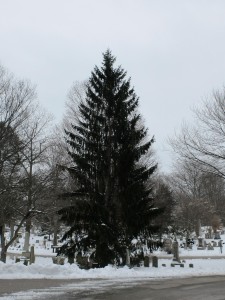 Contemporary usage of Norway spruce includes being a favorite choice for Christmas trees. In London’s Trafalgar Square, there is an annual decorated Norway spruce, a thank you gift from the people of Oslo, Norway. This as remembrance for England providing safe exile for Norway’s king during the Second World War’s occupation of Norway by Germans. In New York’s Rockefeller Center, the Christmas tree, next to the skating rink, almost always is Norway spruce, a tradition that goes back to the 1930’s. Other cities use these trees in their central squares at Christmas.
Contemporary usage of Norway spruce includes being a favorite choice for Christmas trees. In London’s Trafalgar Square, there is an annual decorated Norway spruce, a thank you gift from the people of Oslo, Norway. This as remembrance for England providing safe exile for Norway’s king during the Second World War’s occupation of Norway by Germans. In New York’s Rockefeller Center, the Christmas tree, next to the skating rink, almost always is Norway spruce, a tradition that goes back to the 1930’s. Other cities use these trees in their central squares at Christmas.
Norway spruce wood has long been a choice for soundboards in violins, cellos, guitars, pianos, and other instruments. Antonio Stradivari (1644-1737), renowned Italian violin-maker of the late 17th and early 18th centuries recognized this. The February 2009 issue of Arborist News reported, “…Stradivari… produced superior violins in part because of his use of Norway spruce (Picea abies)….Violins produced by this type of wood held a superior “modulus of elasticity,” or higher quality characteristics for resonance.” Whether it was the Norway spruce’s superior modulus of elasticity, Stradivari’s skill, or perhaps both, Wikipedia reports that in 2007 a 1729 Stradivari violin sold for $2.7 million, in 2010, a 1697 Stradivari violin sold for $3.6 million, and in 2011 a 1721 Stradivari violin sold for 9.8 million pounds.
Norway spruce also provides some with a different value, the intangible, awe-inspiring value of longevity. In Sweden there is ‘Old Tjikko’, claimed by adherents as the world’s oldest tree. At 9,550 years-old, this is a true attention-getter. A clarifying explanation, this is an example of vegetative cloning of tree trunks upon part of an older root system. Any individual trunk may live for hundreds of years, when it dies another trunk will grow from the same root system. This clonal Norway spruce’s root system has been carbon dated at 9,550 years. This is in contrast to the bristlecone pine trees of the western United States where dendrochronology, the counting of tree rings, have found individual trees 5000-years-old.
On your next visit to Mount Auburn, feel free to ponder the tangible value, as well as the intangible value of our over 100 Norway spruce found throughout our landscape.
Leave a Reply to Betsy Munzer Cancel reply